

3D printing was first developed in the 1980s and since then, it’s come a long way! Today, 3D printing is becoming increasingly popular in plastic manufacturing projects and plastic injection molding.
3D printing originated as a rapid prototyping tool, but today, it has evolved to support an array of technologies. There are various applications of 3D printing, and its use cases vary across industries. It can be used for printing various types of consumer products such as eyewear, toys, and footwear, or industrial products such as manufacturing aids. This technology is also used to develop automotive and aerospace prototypes.
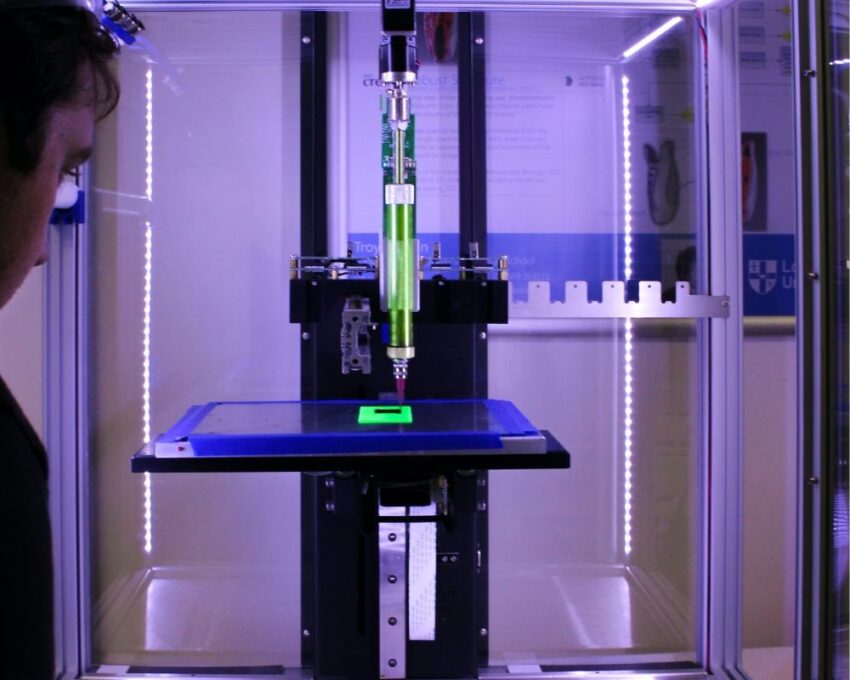
The potential 3D printing applications continue to evolve in creative ways in new business models and technology. In this article, we explore the role of 3D printing in manufacturing, how 3D printing is applied across a range of industries, and how it is used by businesses to drive innovation and growth.
3D printing or three-dimensional printing is also known as additive manufacturing. 3D printing is a process of creating three-dimensional objects from a digital design by printing and fusing material layers. This creation, of a 3D printed object, is achieved using ‘additive processes’ and thus, the name. In an additive process, a part or an object is built by depositing material layer by layer. Each of these layers can be seen as a thinly sliced cross-section of the part.
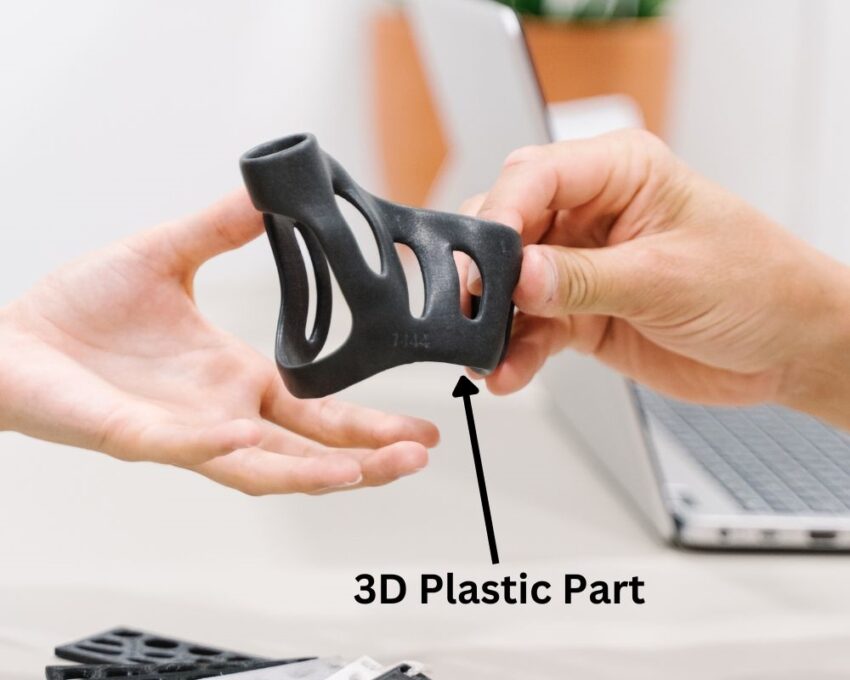
3D printing enables you to produce complex shapes with less material as compared to other manufacturing techniques. Generally, injection molding companies use a 3D printer to create a part from a model or concept plastic part. Depending on the size and complexity, it can take anywhere from 30 minutes to 48 hours to create a single 3D-printed object.
3D printing extended extra flexibility to plastic designers as they can now construct any shape. 3D technology makes it easy for plastic designers to create desired geometrical blueprints. This technology has revolutionized the industry by introducing complex designs that were imperative for innovations.
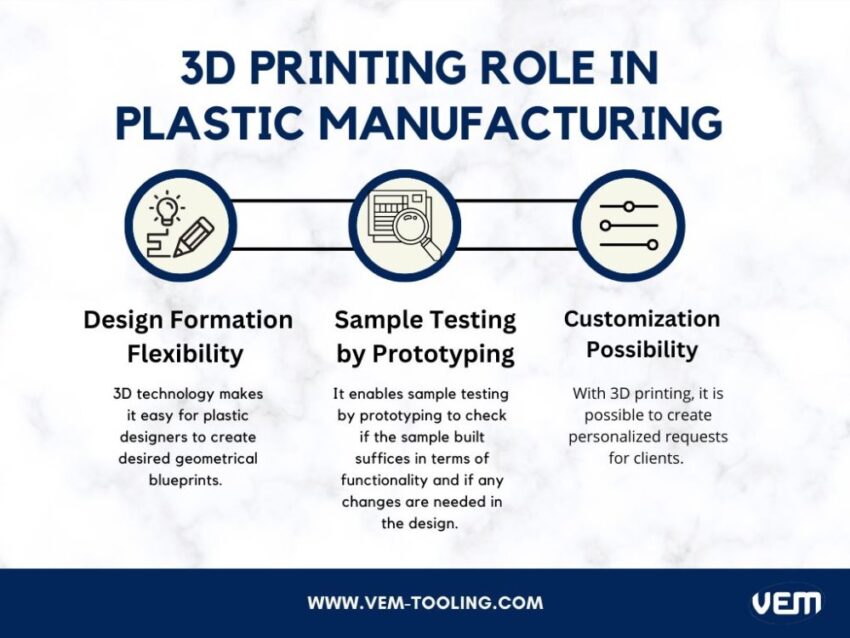
Rapid prototyping is an early sample of the desired plastic part. It is built to check if the prototype suffices in terms of functionality and if any changes are needed in the design. It can also be created to check for an assembly with other parts.
Prototype samplings are also important to showcase products and proof of concepts for investors. They can also be used to make demonstrations in exhibitions and trade shows. Prototypes here, help businesses demonstrate their portfolio to the market and industry experts.
Physical examination of the prototype helps in determining any type of flaws before going into mass production. Making prototype samples through 3D printing before creating expensive molds saves business owners from financial losses.
3D printing enables plastic designers to customize plastic parts as per the requirements of the customers. It is possible to create personalized requests for clients with the use of 3D printing technology.
A printed part before manufacturing is an investment in terms of time and budget. Let’s take a look at some of the benefits of the 3D printing manufacturing process:
3D printing is relatively a new concept to various industries but it was invented in the 1980s. Today, it is widely recognized and is rapidly evolving to be one of the fastest-growing industries in the world! Let’s explore the history and origin of 3D printing.
The notion of 3D printing germinated in the early 1980s and can be traced back to Japan. In 1981, Hideo Kodama was trying to develop a rapid prototyping system and discovered a way to print layers of material using a photosensitive resin polymerized by UV light to create a 3D product but he was unable to get the patent for this technology.
Though he could not achieve the patent requirement for this technology, he is credited as the first inventor of this manufacturing system. This manufacturing system that was developed by Hideo Kadama is an early version of the modern SLA machine.
3 years later, a team of French inventors: Alain Le Méhauté, Olivier de Witte, and Jean-Claude André created a rapid prototyping machine to print 3D objects but instead of resins, they created a system that cured liquid monomers into solids by using a laser. However; they could not forecast the use of this technology so they abandoned the patent application and their discoveries.
In 1986, an American engineer named Charles Hull created a prototype for a process called stereolithography (SLA) and patented the technology. He is today known as the ‘father of 3D printing’.
Charles Hull used acrylic-based materials to create 3-D objects. It is a system for generating 3-D objects by creating a cross-sectional pattern of the object. Although the SLA invention was based on Hideo Kodama’s research, it was the digitization of the invention that made it relevant in today’s industry. Hull was the key developer of the STL (Standard Triangle Language) file format, a digital file that can be read by 3D printers. You can read more about Charles Hull and the patent here.
STL file format development is the reason that today, additive manufacturing has been possible! This development has made it possible to design a 3D model on computers.
Polylactic acid is the most widely used plastic for 3D printing. It’s easy to print and is available in a range of colors, which makes it ideal for prototyping. It is able to melt at low temperatures and is biodegradable.
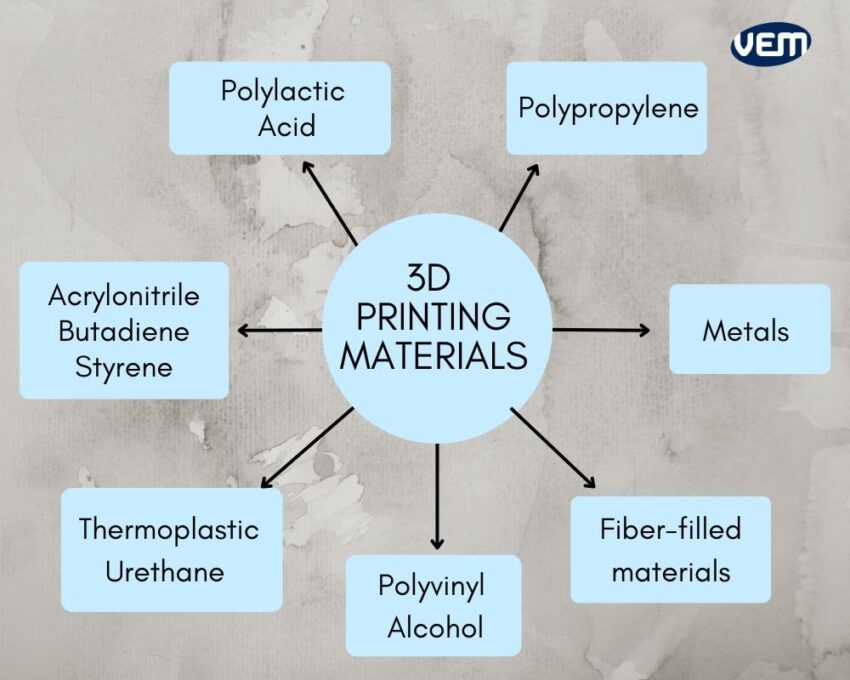
ABS is one of the most popular plastics for 3D printing and injection molding plastic parts. It is one of the most resistant plastics as it has high impact resistance and demonstrates an excellent tolerance to high temperatures.
To print ABS correctly, it is necessary to have a closed printer. This ensures that the heat is maintained during the manufacturing process. This ensures that the resin doesn’t shrink during printing and warping defects do not arise.
TPU is one of the most popular flexible materials for 3D printing. This plastic is very popularly used for coatings as it is friction and wear resistant. TPU is available in varying degrees of hardness and the most rigid ones are the easiest to print.
Polyvinyl alcohol is a support material. It is a water-soluble material that allows for obtaining a better surface finish on the contact surface of the support. It is advised to store this material in a dry place so that it is always dry and ready to be used for your 3D printer.
PP is widely used in the industrial sector for manufacturing functional parts due to its impact and abrasion resistance. It also exhibits excellent resistance to chemicals! This material is relatively flexible, and is thus used to create protective elements that come in contact with the skin, such as face shield supports.
Polypropylene is a difficult material to print because of its high warping. Just like ABS, it is necessary to have a closed printer to maintain a warm environment to avoid warping.
3D printer metals are composed of metal powders and a part of binder polymers. In order to manufacture functional parts with these materials, it is necessary to remove the binder material and go through the sintering process, after printing the part.
Fiber-filled materials are one of the most resistant materials after metals. They are resistant to mechanical stress and corrosive environments and are thus popular in the industrial sector. Fiber-filled materials are plastics and resins filled with varying concentrations of glass and carbon fibers. Let’s take a look at some of the fiber-filled materials that are commonly used for 3D printing:
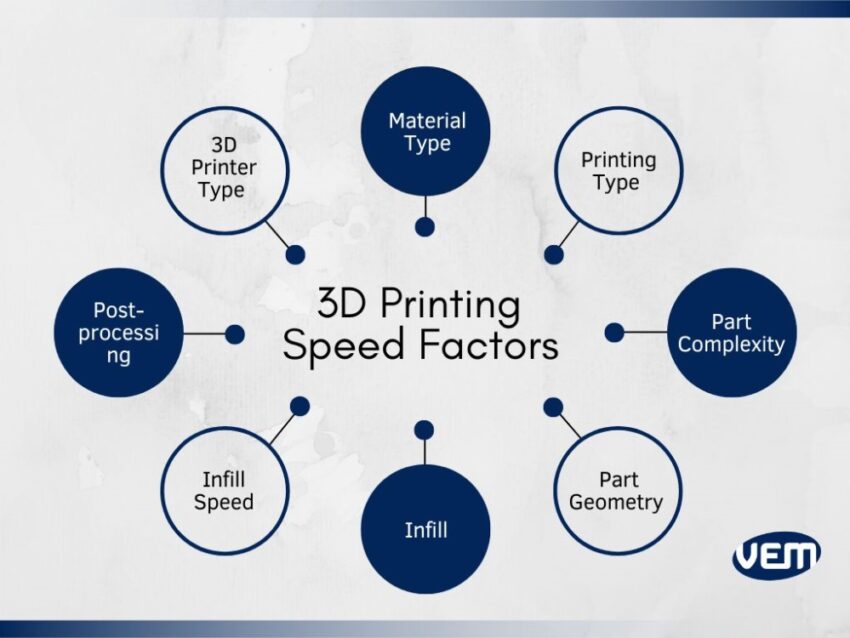
Today, there are various types of 3D printers and they all have unique capabilities as well as limitations. Some 3D printing machines are faster than others. You should also note that the fastest 3D printer is also generally more expensive so that adds to the cost.
Some materials are easier to print than others. Materials have varying requirements such as they need different extrusion and bed temperatures and varying times to adhere and set. All these factors have an impact on the 3D printing speed.
Size plays a significant role in 3D printing. If more layers are required for a plastic part, the print head will need more passes and it will take longer to print. In addition, height also plays a factor. The taller parts require more passes than shorter ones, thus, increasing the printing time.
3D printing processes can be segmented into paintbrush and paint roller types. The paintbrush type takes longer than paint-roller-style printing. Let’s take a look at both printing types:
The more complex the part’s geometry, the longer it will take to print it. If a part has many complex layers in its geometry, the print head will need to build the boundaries for these parts before filling each of them in. The build time can also be affected by the 3D printing type, as some technologies are able to deposit complex geometries at a higher speed than others.
Infills are the internal structures of the 3D part. If the infill pattern is complex, the print speed will be lengthier as it will take longer to produce. You should also note that the largest effect of the infill on the print speed is due to the density. If the density is higher, then the print time will increase as it improves the strength of the finished part.
Post-processing involves cleaning, rinsing, and drying printed parts. Each technology has its own post-processing requirements. You should note that it is also dependent upon the size, complexity, and geometry of the parts. Generally, smaller parts take only a few minutes to clean whereas larger parts can take several hours of post-processing.
3D Printing can create parts only in a selected range of materials. This is because 3D printing needs to be in a temperature-controlled environment and not all plastics or metals can be temperature controlled enough. In addition, not all materials that are printable are food safe.
Currently, 3D printers have small print chambers which restrict the sizes of parts that can be printed. If it’s a bigger part, it will need to be printed in separate parts and then later, joined.
The cost of 3D printing is static. While the initial investment for 3D printing may be lower than injection molding and other manufacturing methods, once it’s scaled to large volumes for mass production, the cost per unit does not decrease in 3D printing as it generally does with injection molding.
Most 3D-printed parts need some form of cleaning to remove the support material from the build. This is required to smoothen the surface to achieve the required finish. Post-processing methods can be either water-jetting, chemical rinsing, heat drying, or assembly.
3D-printed parts are produced by layering. Although these layers adhere together, they can also delaminate if subjected to certain stresses. This is mostly observed in the Fused Deposition Modelling technique (FDM). Thus, it may be better to use injection molding techniques in certain cases as it creates part structures that will remain intact.
As 3D printing is becoming more and more accessible, there is an increased risk of creating counterfeit products by blatantly copying the designs. This poses an evident issue around copyright and quality control.
3D printing offers unique features and competitive advantages thus, the demand for additive manufacturing in the plastic manufacturing industry is increasing day by day. It’s true that 3D printing manufacturing processes are evolving rapidly but currently, a 3D printer cannot match the speed, volume, and efficiency of a plastic injection molding machine. For instance: It can take up to 30 minutes to print a 3D part whereas the same plastic part can be created within seconds using injection molding.
3D printing has opened flexible design opportunities such that it can be applied to an array of industries! Let’s understand what impact 3D printing will have on the plastic injection molding industry in the near future:
3D-printed plastic injection molds can offer various benefits such as added functionalities and cost savings. Let’s take a look at these:
Today, 3D printing can print a plastic injection mold for low volumes. The 3D molding technology does not have the narrow part tolerances required to create a plastic injection mold that can withstand high volume, but this is expected to change in the near future.
In any manufacturing process, the first run-off is to ensure that the plastic part meets the quality standards and is functional as per the project requirements. This is usually considered an investment.
In the near future, 3D printers are expected to be efficient enough to replace an injection molding machine for small production quantities thus, it could eliminate the upfront investment required for molds and reduce lead time for the first run-offs.
3D printing will continue to evolve and revolutionize the plastic injection molding industry by eliminating limitations. If you have any questions in determining whether 3D printing is the right process for you, you can contact us and we will get back to you right away.
Our team has vast experience and they can guide you to apply the correct technology process for your project.